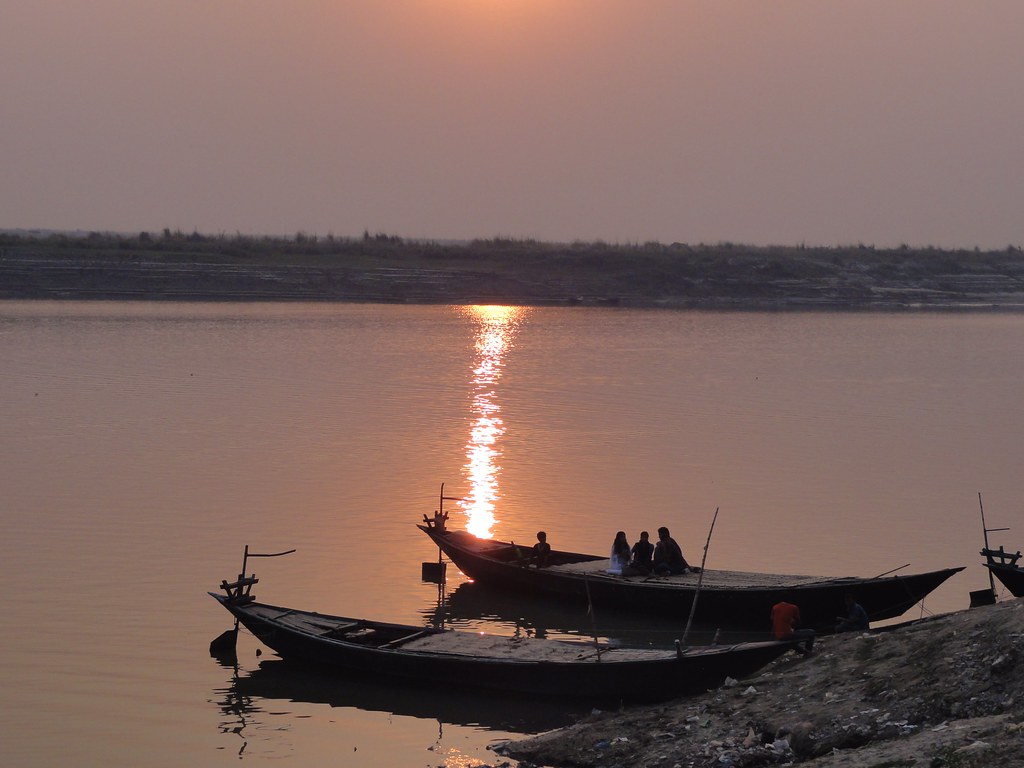Padma River

Nestled within the vibrant landscapes of Bangladesh, the Padma River flows gracefully, weaving through the fabric of the nation’s cultural heritage. As the main distributary of the Ganges, the Padma holds a special place in the hearts and minds of the Bangladeshi people, serving as a source of inspiration, livelihood, and identity. In this exploration of the cultural importance of the Padma, we will unravel the myriad ways in which it shapes the traditions, customs, and collective consciousness of Bangladesh.
The Padma River: A Symbol of Identity
Before delving into the specifics of its cultural significance, let us first understand the geographical and historical context of the Padma River. Originating from the Ganges in India, the Padma flows southeastward for 356 kilometers (221 miles), meandering through the southwestern region of Bangladesh before merging with the Meghna River near the Bay of Bengal. Throughout its journey, the Padma nourishes the fertile plains, sustains agriculture, and provides a lifeline for millions of people.
Cultural Significance of the Padma River:
Spiritual Heritage:
The Padma River holds immense spiritual significance for the people of Bangladesh, serving as a sacred waterway that is deeply intertwined with religious practices and beliefs. Hinduism, Buddhism, and Islam, the three major religions practiced in Bangladesh, all venerate the Padma as a symbol of purity, divinity, and renewal. Pilgrims flock to its banks to perform rituals, bathe in its holy waters, and seek blessings for auspicious occasions.
Literary Inspiration:
The Padma River has inspired countless poets, writers, and artists throughout history, serving as a muse for creative expression and storytelling. In Bengali literature, the Padma is often depicted as a metaphor for life’s journey, with its ever-changing currents symbolizing the passage of time and the cyclical nature of existence. Renowned poets such as Rabindranath Tagore and Kazi Nazrul Islam have immortalized the beauty and majesty of the Padma in their verses, cementing its place in the literary canon.
Cultural Festivals and Traditions:
The cultural calendar of Bangladesh is replete with festivals and traditions that pay homage to the Padma and its bountiful blessings. During festivals such as Pohela Boishakh (Bengali New Year) and Durga Puja, communities gather along the banks of the Padma to celebrate with music, dance, and feasting. Traditional boat races, known as nouka baich, are also held on the Padma, showcasing the maritime heritage and camaraderie of riverine communities.
Economic Livelihood:
Beyond its spiritual and cultural significance, the Padma River plays a vital role in sustaining the economic livelihoods of millions of Bangladeshis. The fertile plains irrigated by the Padma support a thriving agricultural sector, producing rice, jute, and other crops that form the backbone of the country’s economy. Fishing communities along the river banks rely on the Padma’s abundant waters for their sustenance, while riverine trade and transportation contribute to commerce and connectivity.
Preserving the Cultural Heritage:
In light of its cultural importance, efforts are underway to preserve and protect the Padma and its surrounding ecosystems. Environmental conservation initiatives, community-based tourism projects, and heritage preservation programs aim to safeguard the cultural heritage and natural beauty of the Padma for future generations. By fostering a sense of stewardship and appreciation for the river, Bangladeshis are ensuring that the cultural legacy of the Padma endures for centuries to come.
Conclusion:
In conclusion, the Padma River stands as a symbol of cultural resilience, spiritual reverence, and economic vitality in Bangladesh. Its waters flow through the annals of history, shaping the identity and collective memory of the nation. As we celebrate the cultural significance of the Padma, let us also recognize the need to cherish and protect this invaluable heritage for generations to come, ensuring that its cultural tapestry continues to inspire and enrich the lives of all who call Bangladesh home.
Know More about the Padma River.
What are The Religious Places of the Padma River?
When Did The Padma River Basin Become a Focus?
Where is The Padma River Located?
Who Were The Key Historical Figures and Civilizations of The Padma River?
How to Reach Padma River?




